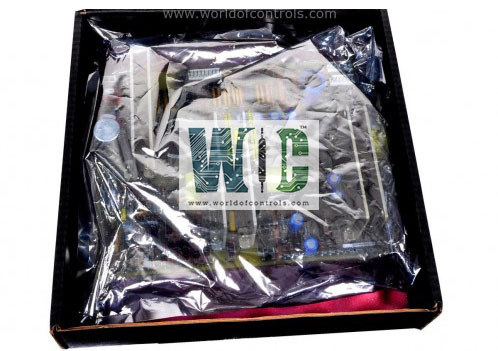SPECIFICATIONS
Part No.: IS200VPWRH1AJB
Manufacturer: General Electric
Series: Mark VI
Function: Turbine Protection Daughterboard
Number of Sub-D pin Connectors: 4
Availability: In Stock
Country of Manufacture: United States (USA)
Functional Description
IS200VPWRH1AJB is a Turbine Protection Daughter board developed by GE. It is a part of the Mark VI control system. The model is designed to seamlessly integrate into TMR architectures, enhancing system reliability and redundancy. With its compatibility with TMR architectures, versatile communication interfaces, and robust design, it plays a role in ensuring system reliability, flexibility, and performance.
Features
- LED Indicators for Status Monitoring: The front faceplate of the board features several LEDs, including status, run, and fail indicators. These LEDs provide visual feedback on the performance and operational status of the board.
- Communication Interfaces: Communication with other modules occurs primarily through the IONet function, ensuring efficient data exchange and synchronization within the control system. Additionally, the board supports communication via the Unit Data Highway (UDH), enabling connectivity with a wide range of devices and software applications beyond the Mark VI system, including Historian Software, HMIs, and Static Starters.
- Versatile Front Faceplate Components: Alongside the LED indicators, the front faceplate board features four sub-D pin connectors, an Ethernet port, a three-pin female plug connector, and other essential components. These components facilitate seamless integration and connectivity with other system elements, providing a comprehensive solution for control and monitoring requirements.
- Sub-Assembly Design: The model is designed as a sub-assembly or Turbine Protection Daughter board, allowing for easy installation and integration into the Mark VI control system architecture.
- Power Supply Options: The board supports flexible power supply options, including 125 VDC or 120-240 VAC, accommodating various system configurations and power requirements.
- Protection Measures for Fault Prevention: In TMR systems, a protection backup module is often used to ensure the board remains operational and free from faults that could impact performance. This redundancy enhances system reliability and availability.
- Enhanced Communication Capabilities with UDH: The integration of the Unit Data Highway (UDH) feature enables the board to communicate not only within the Mark VI system but also with external devices and software applications, expanding its versatility and functionality.
Control Cabinet Features
- Configuration Options: The control cabinet can accommodate either a single simplex Mark VI control module or three TMR (Triple Modular Redundant) control modules. This flexibility allows for customization based on system requirements and redundancy needs.
- High-Speed I/O Network (IONet): The control modules within the cabinet are linked to their remote input/output (I/O) devices via a high-speed I/O network known as IONet. This network facilitates rapid data exchange between the control modules and the remote I/O devices, ensuring efficient system operation.
- Unit Data Highway (UDH) Connectivity: The control modules are also connected to the Unit Data Highway (UDH) via their controller Ethernet port. This connection enables communication with external devices, software applications, and other components beyond the control cabinet, expanding the system's capabilities and interoperability.
- Local or Remote I/O Configuration: The control cabinet supports both local and remote I/O configurations, providing flexibility in system design and installation. This allows for optimal placement of I/O devices based on system layout and operational requirements.
- Power Requirements: The control cabinet requires power input of 120/240 V AC and/or 125 V DC. This power is converted to 125 V DC within the cabinet to supply power to the control modules and associated components. The dual power input options enhance system reliability and resilience against power disruptions.
- Integration and Compatibility: The control cabinet is designed to seamlessly integrate with other components of the Mark VI system, ensuring compatibility and interoperability. This integration enables cohesive system operation and effective control and monitoring of industrial processes.
- Redundancy and Fault Tolerance: In TMR configurations, where three control modules are employed, the control cabinet provides redundancy and fault tolerance to enhance system reliability and availability. This ensures continuous operation and minimizes the risk of downtime due to component failures.
- Environmental Considerations: The control cabinet is designed to withstand harsh industrial environments, with features such as temperature control, ventilation, and protective enclosures to safeguard the internal components from environmental factors.
World of Controls has the most comprehensive collection of GE Mark VI components. Please contact WOC as soon as possible if you require any extra information.
Frequently Asked Questions
What is IS200VPWRH1AJB?
It is a Turbine Protection Daughter board designed and manufactured by GE.
How many LEDs are present on the front faceplate?
The board features a total of 11 LEDs on its front faceplate, including status, run, and fail indicators.
How many Sub-D pin connectors does the board have?
The board is equipped with four Sub-D pin connectors, facilitating connectivity with external devices and components.
What are the power supply options?
The board supports power supply inputs of 125 VDC or 120-240 VAC, offering flexibility in power source selection.
What communication methods are available for the board?
The board communicates with other modules primarily through the IONet function. It can utilize the Unit Data Highway (UDH) feature for communication with a broader range of devices and software applications beyond the Mark VI System, including Historian Software, HMIs, and Static Starters.
